
The Majestic Heights of Tiger Hill, Darjeeling
Discover the breathtaking sunrise views and serene landscapes of Tiger Hill, Darjeeling's iconic vantage point, offering a perfect blend of nature, culture, and adventure.
Tiger Hill is one of Darjeeling's most iconic spots, famous for its breathtaking sunrise views over the Himalayas. Situated at an altitude of 2,590 meters, this vantage point offers a spectacular panorama of the snow-capped peaks, including the majestic Mount Kanchenjunga, the third highest peak in the world. On a clear day, you might even catch a glimpse of Mount Everest, making it a haven for nature lovers and photographers alike. The journey to Tiger Hill is an adventure in itself. Visitors often start early in the morning to reach the summit before dawn. As the sun rises, the sky bursts into a palette of colors, creating a mesmerizing backdrop against the towering mountains. The experience is further enhanced by the serene and tranquil atmosphere that envelops the area, offering a perfect escape from the hustle and bustle of everyday life. Beyond the sunrise, Tiger Hill is surrounded by lush tea gardens, quaint villages, and dense forests, making it an excellent spot for hiking and exploring the local culture. The nearby Ghoom Monastery, one of the oldest Tibetan Buddhist monasteries in Darjeeling, adds a touch of spiritual charm to the visit. With its rich history, stunning landscapes, and cultural significance, Tiger Hill is a must-visit destination for anyone traveling to Darjeeling.
Local tips in Tiger Hill
- Arrive early to secure a good spot for watching the sunrise, as it can get crowded.
- Carry warm clothing, as the early morning temperatures can be quite chilly.
- Consider hiring a local guide for insights into the best viewpoints and local culture.
- Visit the nearby Ghoom Monastery to enhance your cultural experience.
- Check the weather forecast in advance to ensure clear skies for the best views.
The Majestic Heights of Tiger Hill, Darjeeling
Tiger Hill is one of Darjeeling's most iconic spots, famous for its breathtaking sunrise views over the Himalayas. Situated at an altitude of 2,590 meters, this vantage point offers a spectacular panorama of the snow-capped peaks, including the majestic Mount Kanchenjunga, the third highest peak in the world. On a clear day, you might even catch a glimpse of Mount Everest, making it a haven for nature lovers and photographers alike. The journey to Tiger Hill is an adventure in itself. Visitors often start early in the morning to reach the summit before dawn. As the sun rises, the sky bursts into a palette of colors, creating a mesmerizing backdrop against the towering mountains. The experience is further enhanced by the serene and tranquil atmosphere that envelops the area, offering a perfect escape from the hustle and bustle of everyday life. Beyond the sunrise, Tiger Hill is surrounded by lush tea gardens, quaint villages, and dense forests, making it an excellent spot for hiking and exploring the local culture. The nearby Ghoom Monastery, one of the oldest Tibetan Buddhist monasteries in Darjeeling, adds a touch of spiritual charm to the visit. With its rich history, stunning landscapes, and cultural significance, Tiger Hill is a must-visit destination for anyone traveling to Darjeeling.
Iconic landmarks you can’t miss
Tiger Hill Sunrise Observatory
Experience the breathtaking sunrises and serene landscapes at Tiger Hill Sunrise Observatory in West Bengal, where nature's beauty unfolds spectacularly every morning.

Peace Pagoda, Darjeeling
Discover the tranquil beauty and spiritual essence of the Peace Pagoda, an iconic Buddhist temple in the heart of Darjeeling, surrounded by breathtaking landscapes.

Ghoom Monastery (Samten Choeling)
Discover the peace and beauty of Ghoom Monastery, a historic site of Tibetan Buddhism nestled in the hills of West Bengal.

Observatory Hill View Point
Experience breathtaking views and serene surroundings at Observatory Hill View Point, a must-visit attraction in Darjeeling.

Tiger Hill, Darjeeling
Experience breathtaking sunrises and panoramic views of the Himalayas at Tiger Hill, Darjeeling, a must-visit destination for nature lovers.

Gangamaya Park, Darjeeling, WB
Experience the breathtaking natural beauty of Gangamaya Park in Darjeeling, where tranquility meets stunning Himalayan views.

Himalayan Tibet Museum
Explore the Himalayan Tibet Museum in Darjeeling for a captivating journey into Tibetan culture and heritage amidst stunning mountain views.

Kanchenjunga-View Point
Experience the majestic beauty of Kanchenjunga at the renowned Kanchenjunga-View Point in Darjeeling, a must-see for every nature lover.

Sunrise view point
Experience the breathtaking sunrise over Kanchenjunga at this must-visit viewpoint in Darjeeling, where nature's beauty awakens your senses.

Gorkha war memorial
Explore the Gorkha War Memorial in Darjeeling, a serene tribute to bravery surrounded by stunning Himalayan landscapes.

Unmissable attractions to see
Tiger Hill Sunrise Observatory
Experience the breathtaking sunrise over the Himalayas at Tiger Hill, a must-visit for every traveler in Darjeeling, India.

Peace Pagoda, Darjeeling
Explore the Peace Pagoda in Darjeeling, a serene Buddhist temple offering breathtaking views and a tranquil atmosphere amidst the Himalayan beauty.
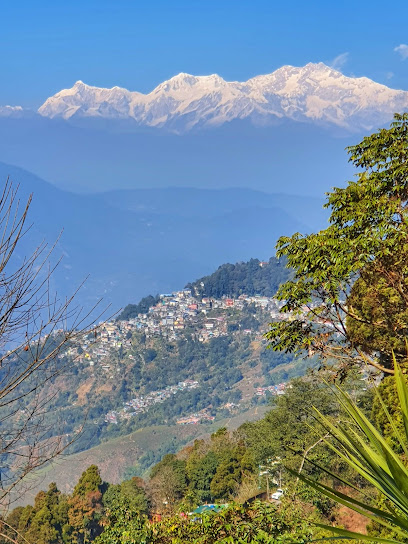
Tea Garden View
Discover the breathtaking landscapes and rich heritage of the Tea Garden View in Darjeeling, where nature's beauty unfolds at every turn.

Japanese Buddhist Temple, Darjeeling
Discover serenity and spirituality at the Japanese Buddhist Temple in Darjeeling, a stunning blend of nature and traditional architecture.

Observatory Hill View Point
Experience breathtaking views and serene moments at Observatory Hill View Point in Darjeeling, a must-visit for nature lovers and photography enthusiasts.

Tiger Hill, Darjeeling
Discover the breathtaking sunrise views at Tiger Hill, Darjeeling, where the Himalayas reveal their beauty in a spectacular display of color.

Shrubbery Nightingale Park
Explore the serene beauty of Shrubbery Nightingale Park in Darjeeling, an idyllic retreat offering stunning landscapes and a peaceful atmosphere.

Himalayan Tibet Museum
Explore Tibetan culture and art at the Himalayan Tibet Museum in Darjeeling, a captivating journey through history and tradition.
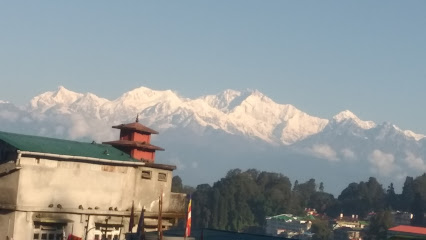
Sunrise view point
Experience the breathtaking beauty of the Himalayas at Sunrise View Point in Darjeeling, where stunning sunrises create unforgettable moments.

Essential places to dine
Glenary's— Bakery, Resturant & Pub
Experience the rich flavors and heritage charm at Glenary's Bakery & Restaurant in Darjeeling—where every bite tells a story.
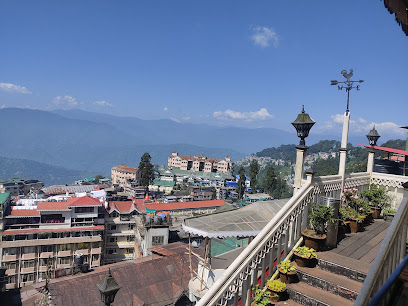
Keventer's
Experience delightful breakfasts at Keventer's in Darjeeling – where tradition meets taste amidst breathtaking hill views.

SANTA BANTA DHABA
Experience authentic Indian cuisine at Santa Banta Dhaba in Darjeeling - where every dish tells a story!

Kunga Restaurant
Discover authentic Tibetan and Chinese flavors at Kunga Restaurant in Darjeeling - a must-visit culinary destination.

Dekevas Restaurant
Discover authentic Tibetan flavors alongside Chinese and Korean delights at Dekevas Restaurant in scenic Darjeeling.
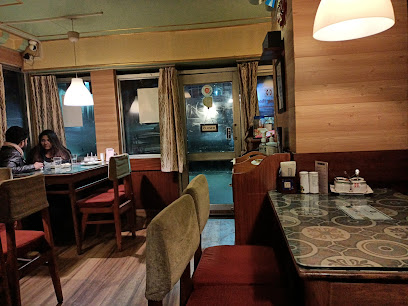
Penang Restaurant
Discover authentic Nepalese flavors amidst the scenic beauty of Darjeeling at Penang Restaurant.

Kunjini Restaurant
Discover delightful vegetarian cuisine at Kunjini Restaurant in Darjeeling's vibrant Chauk Bazaar—where taste meets tradition.

Misty Mountain Restaurant
Experience delectable vegetarian cuisine with breathtaking views at Misty Mountain Restaurant in Darjeeling - a must-visit for every traveler!
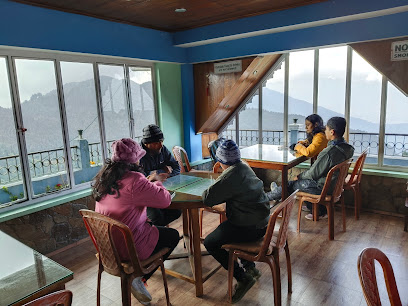
Norgima Restaurant
Discover Norgima Restaurant: A culinary oasis in Darjeeling offering breathtaking views and authentic local flavors.

Delicaci
Experience authentic Indian flavors at Delicaci in Ghoom - a must-visit restaurant for delicious biryani and family-friendly dining.

Markets, malls and hidden boutiques
Darjeeling Mall
Experience the vibrant atmosphere at Darjeeling Mall, a premier shopping and leisure destination amidst stunning Himalayan scenery.

Glenary's— Bakery, Resturant & Pub
Discover the charm of Glenary's in Darjeeling, a bakery, restaurant, and pub offering delicious food and stunning views in a heritage setting.

The Yellow Box
Explore The Yellow Box in Darjeeling for unique gifts and locally crafted souvenirs that capture the essence of this enchanting region.

Biswa Bangla Store
Explore the vibrant crafts of West Bengal at Biswa Bangla Store in Darjeeling, a unique shopping destination for souvenirs and handmade treasures.

Tibet Arts
Explore the rich heritage of Tibetan art and culture at Tibet Arts, an enchanting antique store in the heart of Darjeeling.

Hill Market
Discover the vibrant shopping experience at Hill Market in Darjeeling, where culture meets quality in clothing, groceries, and footwear.

Nepal Curio House
Explore the vibrant heritage of Nepal through unique antiques and handcrafted treasures at Nepal Curio House in Darjeeling.

Gurung's Groceries #GG
Discover the authentic taste of Darjeeling at Gurung's Groceries, your local hub for fresh produce and unique snacks in the heart of the hills.

The Perfume House
Discover the enchanting fragrances of The Perfume House in Darjeeling, where every scent tells a story of nature and heritage.

Sanjay Store
Explore the vibrant Sanjay Store in Darjeeling, where exquisite clothing and local crafts await to enhance your cultural experience.

Essential bars & hidden hideouts
Glenary's— Bakery, Resturant & Pub
Experience the charm of Darjeeling at Glenary's—where delectable treats meet a vibrant pub atmosphere in a beautiful heritage setting.

Joey's Pub
Experience the vibrant nightlife of Darjeeling at Joey's Pub, where great food and drinks meet stunning views and lively ambiance.

Ara restaurant cum bar
Discover the flavors of Darjeeling at Ara Restaurant cum Bar, where local cuisine meets international flair in a stunning setting.

Simla Bar & Restaurant | Best Party Place
Dive into the flavors of Darjeeling at Simla Bar & Restaurant, where Punjabi cuisine meets a vibrant social atmosphere.

New Lion Gate Hotel, Restaurant & Bar
Discover the enchanting New Lion Gate Hotel, Restaurant & Bar in Darjeeling, where breathtaking views and exquisite cuisine await every visitor.
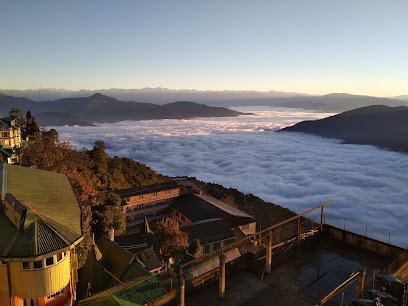
The Patio Restaurant
Discover the flavors of Darjeeling at The Patio Restaurant, where culinary excellence meets stunning mountain views.

Chopstix Restaurant & Bar, Darjeeling,India
Experience the fusion of local flavors and international cuisine at Chopstix Restaurant & Bar, set amidst the breathtaking beauty of Darjeeling's tea gardens.

Yu Cafe
Discover Yu Cafe in Darjeeling, where local flavors meet breathtaking views in a cozy dining atmosphere.

The Chancellor Restobar
Discover the perfect blend of relaxation and stunning views at The Chancellor Restobar in Darjeeling, where culinary delights meet a vibrant atmosphere.

Local Bar, Ghoom
Experience the vibrant local culture at Ghoom's finest bar, offering a wide selection of drinks in a cozy, welcoming atmosphere.

Local Phrases
-
- Helloनमस्ते
[namaste] - Goodbyeअलविदा
[alvida] - Yesहाँ
[haan] - Noनहीं
[nahi] - Please/You're welcomeकृपया
[krupaya] - Thank youधन्यवाद
[dhanyavad] - Excuse me/Sorryक्षमा कीजिए
[kshama keejiye] - How are you?आप कैसे हैं?
[aap kaise hain?] - Fine. And you?अच्छा। आप?
[achha. aap?] - Do you speak English?क्या आप अंग्रेज़ी बोलते हैं?
[kya aap angrezi bolte hain?] - I don't understandमुझे समझ में नहीं आया
[mujhe samajh mein nahi aaya]
- Helloनमस्ते
-
- I'd like to see the menu, pleaseकृपया मेन्यू देखना चाहें
[krupaya menu dekhna chahen] - I don't eat meatमैं मांस नहीं खाता
[main maans nahi khata] - Cheers!चियर्स!
[cheers!] - I would like to pay, pleaseकृपया मैं भुगतान करना चाहूं
[krupaya main bhugtan karna chahoon]
- I'd like to see the menu, pleaseकृपया मेन्यू देखना चाहें
-
- Help!मदद!
[madad!] - Go away!चले जाओ!
[chale jao!] - Call the Police!पुलिस को बुलाओ!
[police ko bulaao!] - Call a doctor!डॉक्टर को बुलाओ!
[doctor ko bulaao!] - I'm lostमैं खो गया हूँ
[main kho gaya hoon] - I'm illमुझे बीमारी है
[mujhe beemari hai]
- Help!मदद!
-
- I'd like to buy...मैं खरीदना चाहता हूँ...
[main khareedna chahta hoon...] - I'm just lookingमैं बस देख रहा हूँ
[main bas dekh raha hoon] - How much is it?यह कितने का है?
[yah kitne ka hai?] - That's too expensiveयह बहुत महंगा है
[yah bahut mahnga hai] - Can you lower the price?क्या आप दाम कम कर सकते हैं?
[kya aap daam kam kar sakte hain?]
- I'd like to buy...मैं खरीदना चाहता हूँ...
-
- What time is it?अब कितने बजे हैं?
[ab kitne baje hain?] - It's one o'clockएक बजे हैं
[ek baje hain] - Half past (10)दस बजे तक
[das baje tak] - Morningसुबह
[subah] - Afternoonदोपहर
[dopahar] - Eveningशाम
[shaam] - Yesterdayकल
[kal] - Todayआज
[aaj] - Tomorrowकल
[kal] - 1एक
[ek] - 2दो
[do] - 3तीन
[teen] - 4चार
[chaar] - 5पाँच
[paanch] - 6छह
[chhe] - 7सात
[saat] - 8आठ
[aath] - 9नौ
[nau] - 10दस
[das]
- What time is it?अब कितने बजे हैं?
-
- Where's a/the...?एक/यहाँ...कहाँ है?
[ek/yahan...kahan hai?] - What's the address?पता क्या है?
[pata kya hai?] - Can you show me (on the map)?क्या आप मुझे दिखा सकते हैं (नक्शे पर)?
[kya aap mujhe dikha sakte hain (nakshye par)?] - When's the next (bus)?अगली (बस) कब है?
[agli (bus) kab hai?] - A ticket (to ....)एक टिकट (को....)
[ek ticket (ko....)]
- Where's a/the...?एक/यहाँ...कहाँ है?
History of Tiger Hill
-
Tiger Hill, located at an elevation of 2,590 meters, has been significant since ancient times. It has been a vantage point for various communities to observe and communicate across the valleys. The name itself is derived from the presence of the Bengal tiger, which was once common in the region, indicating the natural richness and wildlife that characterized the area.
-
During the British colonial period in the 19th century, Tiger Hill rose in prominence as a tourist destination. The British, captivated by the hill's breathtaking views of the Kanchenjunga mountain range, began to develop it for leisure and tourism. It became a favored retreat for colonial officials, who built bungalows and paths to facilitate access.
-
Tiger Hill is renowned for its spectacular sunrise views, with tourists flocking to witness the golden light illuminating the peaks of the Himalayas, particularly Kanchenjunga, the third highest mountain in the world. This tradition began in the early 20th century and has since become a hallmark of Darjeeling's tourism, attracting visitors from around the globe.
-
The area around Tiger Hill is steeped in local lore and cultural significance. It is often associated with legends of the local Sherpa and Lepcha tribes, who consider the hill sacred. Festivals and rituals are sometimes held here, highlighting the integration of natural landmarks into the spiritual lives of the local communities.
-
In recent decades, Tiger Hill has faced challenges associated with increased tourism, including environmental degradation and the impacts of climate change. Efforts have been made by local authorities and organizations to promote sustainable tourism practices to preserve the natural beauty and ecological integrity of the area, ensuring that this historical and cultural landmark remains a cherished part of Darjeeling's allure.
Tiger Hill Essentials
-
Tiger Hill is located approximately 11 kilometers from the center of Darjeeling. The easiest way to reach Tiger Hill is by taxi or private vehicle, which can be hired from various locations in Darjeeling. Shared jeeps also operate from the main taxi stand in Darjeeling, providing an economical option for travelers. For those who prefer a more adventurous route, you can hike up to Tiger Hill, which takes around 1.5 to 2 hours from the town center.
-
Tiger Hill is primarily accessible via taxis and private cars. Due to its mountainous terrain, public transportation options are limited. Walking is encouraged within the area for those who wish to explore the scenic surroundings. Cycling is also a viable option for more adventurous travelers, although be prepared for steep climbs.
-
Tiger Hill is generally safe for tourists, but standard precautions should be taken. Avoid walking alone in dimly lit areas at night, and keep an eye on your belongings, especially when visiting crowded viewpoints. There are no specific high-crime areas targeting tourists; however, it is wise to stay vigilant and trust your instincts.
-
In case of an emergency, dial 100 for police assistance or 108 for medical emergencies. The nearest hospital is in Darjeeling, and it is advisable to have travel insurance covering health issues. For minor ailments, there are local pharmacies where you can find basic medications.
-
Fashion: Do wear warm clothing, as temperatures can be quite low, especially in the early morning. Don’t wear overly casual or revealing outfits. Religion: Do respect local customs and traditions; when visiting the nearby monasteries, cover your shoulders and knees. Public Transport: Do be polite and offer seats to elderly passengers. Don’t engage in loud conversations or play music on public transport. Greetings: Do greet locals with a smile and a nod. A simple 'Namaste' is always appreciated. Eating & Drinking: Do try local tea and snacks. Don’t eat in public places while walking, as it may be considered impolite.
-
To experience Tiger Hill like a local, wake up early to catch the sunrise, which is a major attraction in the area. Engage with local tea vendors to sample authentic Darjeeling tea. Spend time at the viewpoint to enjoy the panoramic views of the Kanchenjunga range. For a unique experience, visit the nearby Ghoom Monastery, which is steeped in history and offers a glimpse into local culture.
-
Tiger Hill experiences a temperate climate, with the best time to visit being between March to May and September to November. Early mornings can be chilly, so layering is advisable. Monsoon season lasts from June to August, which may hinder visibility of the mountains due to fog and rain.
-
While in Tiger Hill, do not miss trying the local momos (dumplings) and thukpa (noodle soup). There are several small eateries around offering these delicacies. Sample the local tea, which is renowned worldwide for its quality. Always check for cleanliness and hygiene before dining.
Nearby Cities to Tiger Hill
-
Things To Do in Siliguri
-
Things To Do in Gangtok
-
Things To Do in Phuentsholing
-
Things To Do in Paro
-
Things To Do in Thimphu
-
Things To Do in Wangdue Phodrang
-
Things To Do in Rangpur
-
Things To Do in Punakha
-
Things To Do in Namche Bazaar
-
Things To Do in Trongsa
-
Things To Do in Bumthang
-
Things To Do in Jakar
-
Things To Do in Nagarkot
-
Things To Do in Bhaktapur
-
Things To Do in Mongar








